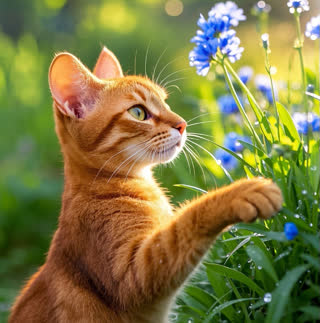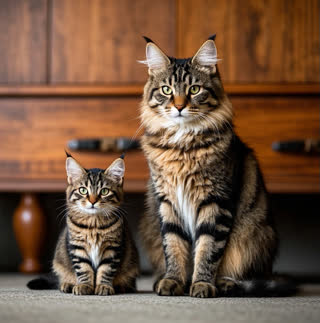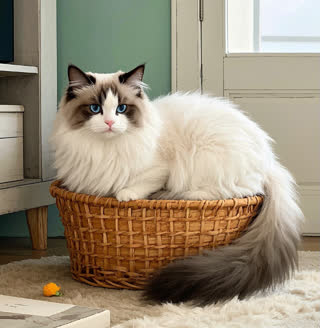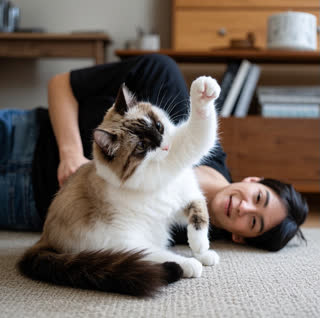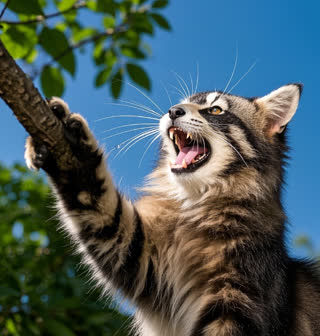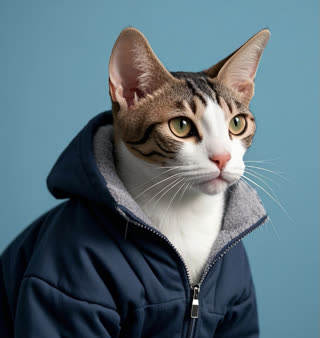Cats are enigmatic creatures, and their tail movements are among their most intriguing forms of communication. If you’ve ever wondered, “Why do cats wag their tails?” you’re not alone. While tail wagging is often associated with dogs expressing excitement, in cats, this behavior carries a much more nuanced meaning. Understanding feline body language—especially tail movements—is key to building a stronger bond with your furry friend and interpreting their needs. In this comprehensive guide, we’ll explore the science behind tail wagging, debunk common myths, and reveal three hidden messages your cat’s tail might be sending.
Cats rely on a combination of vocalizations, body postures, and scent marking to communicate. Their tails are particularly expressive, acting as a barometer for their emotions and intentions. Unlike dogs, whose tail wags are usually positive, cats use their tails to signal a wide range of feelings—from contentment to irritation. To decode these signals, it’s essential to consider the context in which the tail movement occurs. Is your cat relaxed, tense, or in a playful mood? Are their ears forward or flattened? By observing these cues alongside tail behavior, you’ll gain a clearer picture of their state of mind.
When a cat’s tail flicks rapidly or quivers slightly, it often indicates discomfort or agitation. For example, if your cat is trapped in a noisy environment or feels threatened, their tail might twitch as a sign of stress. Similarly, a low-hanging tail with slow, sweeping movements can signal irritation—perhaps they’re unhappy about being interrupted during a nap. It’s crucial to recognize these signs to avoid escalating their stress. Providing a quiet space or distraction can help them calm down.
Example: Imagine your cat is lying on the couch, tail flicking rhythmically while you attempt to pet them. This might be their way of saying, “Not now—I’m in the middle of something!”
Cats are natural hunters, and their tails play a vital role in signaling their predatory instincts. When a cat spots prey (real or imaginary, like a laser pointer), their tail may puff up slightly and twitch rapidly at the tip. This movement reflects their intense focus and pent-up energy. It’s not aggression but rather an expression of excitement and anticipation. Letting them engage in play during these moments can satisfy their hunting drive and prevent destructive behavior.
Pro Tip: Use interactive toys to channel this energy into a positive outlet.
A cat’s tail can also convey social intentions. A high, upright tail with a gentle curve often means they’re feeling confident and friendly. This is a common greeting among cats and a sign they’re open to interaction. Conversely, a tail held low or tucked between the legs indicates fear or submission. If a cat’s tail is puffed up and held straight out, it’s a clear warning sign—they feel threatened and may lash out if provoked.
Myth Busted: Contrary to popular belief, a wagging tail isn’t always a sign of aggression. It’s the combination of tail position, body posture, and environment that matters most.
While tail wagging is a primary focus, other aspects of feline body language offer additional clues:
Ears: Forward ears mean curiosity, while flattened ears signal fear or aggression.
Pupils: Dilated pupils can indicate excitement or anxiety.
Whiskers: Relaxed whiskers suggest calmness, while tense, forward-pointing whiskers signal alertness.
Body Posture: A crouched body paired with a twitching tail often means your cat is ready to pounce.
In some cases, tail wagging may indicate underlying health issues. For example:
Excessive Tail Chewing: Could signal allergies, fleas, or anxiety.
Stiff or Immobile Tail: Might point to an injury or neurological problem.
Sudden Changes in Behavior: If your cat’s tail movements suddenly become erratic, consult a veterinarian.
Regular check-ups and monitoring behavior changes can help catch health concerns early.
Understanding your cat’s tail language allows you to respond appropriately to their needs:
Respect Their Boundaries: If their tail is flicking rapidly, give them space.
Encourage Play: Use their tail signals to identify when they’re in the mood for interaction.
Provide Enrichment: Address boredom or pent-up energy with toys and climbing structures.
So, “Why do cats wag their tails?” The answer lies in their complex emotional and social lives. By learning to interpret their tail movements and other feline body language cues, you’ll unlock a deeper understanding of your cat’s world. Remember, patience and observation are key—every cat is unique, and their communication style may evolve over time. With practice, you’ll become fluent in the silent language of your feline companion.
Final Thought: Cats aren’t just pets—they’re fascinating creatures with a rich communication system. Decoding their signals isn’t just about avoiding scratches; it’s about building trust and companionship.


